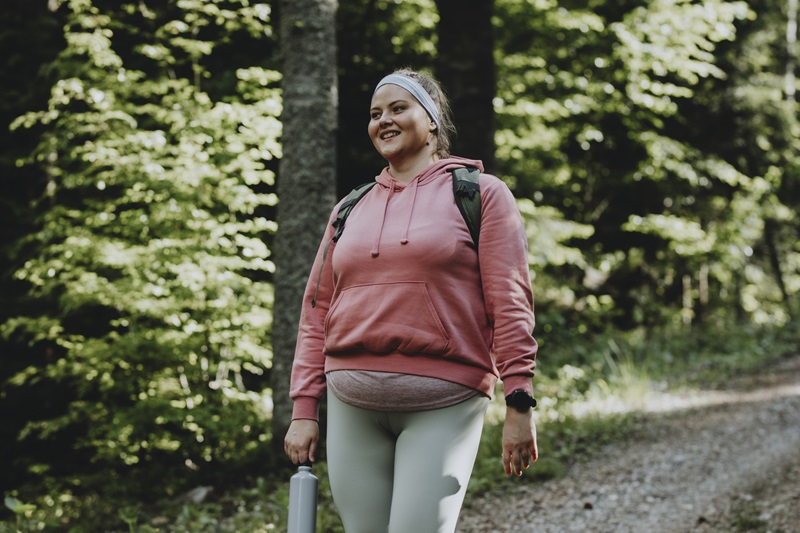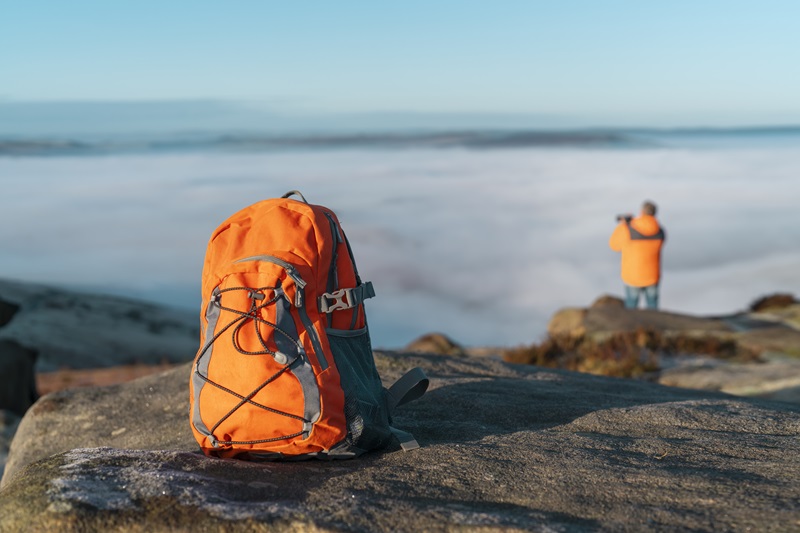There’s a tool that can nearly triple the number of calories you burn while walking, add strength to your entire body and even help maintain bone density. This miraculous tool is probably already in your home: It’s a backpack.
What is Rucking?
By adding a little weight to your bag, you can make big changes to the impact of your walks. This idea isn’t new: It’s called rucking, and has been used to strengthen and test the fitness of military personnel across the world for decades. And it’s become one of the hottest trends in fitness: Posts with the hashtag “rucking” have been viewed more than 21 million times on TikTok.
Luckily, you don’t have to be as tough as a service member to join in. Rucking is an easy to implement exercise routine that will amp up your cardio, whether you’re a workout newbie or a fitness fanatic.
Read on to learn about the health benefits of walking with weight, as well as some tips to help you get started. The best part? There’s no special equipment needed!
4 Amazing Benefits of Rucking
1. Rucking Burns More Calories

And it doesn’t take much weight to make a big difference. According to the Compendium of Physical Activities, a 200-pound man who walks for 30 minutes at a medium pace burns about 160 calories (calculated from the 3.5 METS using Cornell’s calculator). If that same man straps on a 15-pound backpack, he’ll burn about 227 calories on the same walk.
2. Rucking Makes You Feel Stronger

Rucking improves your strength, but it also makes hard work feel easier. In a 2019 study, men who rucked for 10 weeks had lower perceived ratings of exertion when performing a workout task.
Translation: They felt like they weren’t working as hard when doing something difficult … so they felt stronger and more capable.
3. Rucking Can Improve Muscular Power

Power isn’t about building big muscles that move big weights. It’s a measure of how fast you can express the strength in your body.
If you can pick up a stack of books at any pace, you have the strength to lift it. But if you can scoop them off the floor quickly, that uses power.
Power is a big deal as we age. If you slip, your ability to recover quickly before falling down takes power … especially in the lower body.
And rucking helps build and maintain lower body power. In a small study of older women, performing a six-week stair stepping program while wearing a weighted vest improved lower body power by 10 percent.
4. Rucking Can Improve Your Balance

Another protection against falling! In a study of participants walking on treadmills with weighted vests, those who wore the weight saw their scores on a balance test more than double after six weeks of rucking. This was twice the improvement seen by participants who just walked on the treadmill without weight.
4 Tips to Start Rucking Safely
The most important tip: Any backpack will do! There are weighted vests you can use to ruck, and companies make special rucking backpacks designed for walking with weight. However, you don’t need one right away—or at all. You can ruck with any backpack around your house. Grab it and use these tips to get started.
1. Start Light

In the U.S. Army, soldiers ruck heavy packs. One requirement to earn an Expert Infantryman badge, for example, is carrying a 35-pound pack for 12 miles.
That’s a long way, and a lot of weight. But you can increase your calorie burn with much less baggage.
Start with just five percent of your body weight—either a small dumbbell, a brick, some heavy books or some bottles of water. If you find that you aren’t too sore, you can always increase the amount on your next walk.
2. Start Short

You don’t have to walk 12 miles either! Start by taking your normal walk time and cutting it in half.
If you normally walk for 30 minutes, try a ruck for 15 minutes. Make sure you’re comfortable with the experience and that you don’t get too sore. Rest for a day or take an unweighted walk, then try it again.
3. Wrap the Weight

Carrying a backpack with heavy books or a brick inside can leave the weight smacking against your back—not good, and no fun. Wrap the weight in a towel or something else to soften the load.
4. Build Slowly Over Time

Like any form of exercise, rucking works better if you start slow and build as you get stronger. Make sure you’re recovering well from your rucking sessions and aren’t too sore. Then add a little time or a little weight each week.
Increase the length of your walk by a few minutes or toss another heavy book in the backpack. Over time, you’ll be able to build up to longer, stronger walks—and you’ll burn a ton of calories.
*Always speak to your doctor before starting a new exercise routine.
Ready to begin your weight loss journey? Get started with Nutrisystem today!

